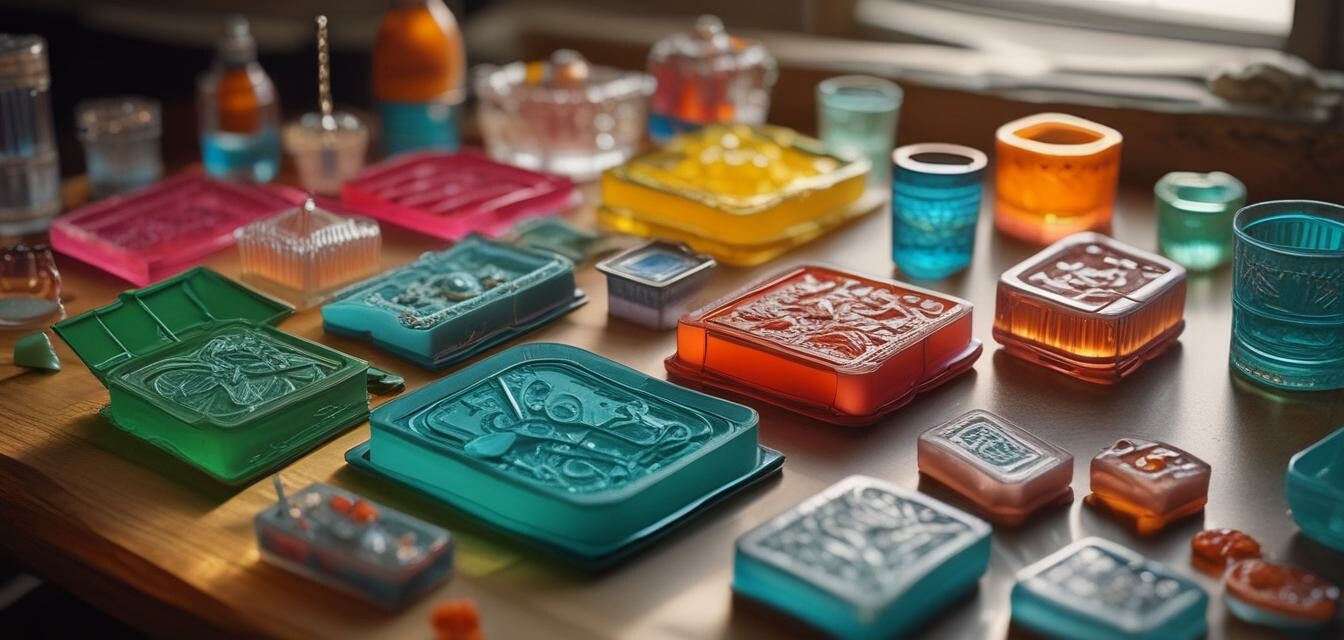
Mastering Mold Design: From Concept to Creation
Key Takeaways
- Understanding mold design is essential for creating unique glass pieces.
- The design process involves brainstorming, sketching, and material selection.
- Choosing the right mold type can significantly impact your glass art projects.
- Safety and proper handling of materials and tools are crucial during the mold-making process.
- Resources like our glass molds blog category will help you enhance your designs.
Designing glass molds is an essential skill for any glass artist looking to create unique, tailored pieces. Whether you're aiming for a stunning bowl or an intricate jewelry design, mastering mold design is key. This comprehensive guide will take you through the entire mold design process, from initial concepts to final product creation, ensuring you're well-equipped to bring your artistic visions to life.
Introduction to Mold Design
Mold design is a vital part of glass making that allows for creativity and craftsmanship to shine. By utilizing molds, artists can achieve specific shapes and sizes, manipulating glass to create a wide variety of stunning pieces. In this article, we’ll explore the steps involved in mold design, various mold types, and tips for successful glass creation.
Steps in the Mold Design Process
The mold design process can be broken down into several key stages:
- Brainstorming Ideas: Begin with brainstorming to generate ideas. Consider what shapes you want to create and the final purpose of your glass piece.
- Sketching Your Design: Create rough sketches to visualize your ideas. Focus on the details and refine your designs.
- Selecting Materials: Choose the best materials for your molds, whether using wood, silicone, or metal, based on your design needs.
- Creating a Prototype: Build a prototype of your mold using inexpensive materials to test the shape and dimensions.
- Finalizing Your Mold: Once satisfied with your prototype, create the final mold with durable materials that can withstand high temperatures.
Choosing the Right Type of Mold
Different types of molds are available for glass-making projects, each serving unique purposes:
| Mold Type | Description | Best For |
|---|---|---|
| Bowl Molds | Shallow or deep forms to shape glass into bowls. | Crafting functional items for everyday use. |
| Plate Molds | Used to create flat, decorative plates. | Artistic and serving pieces. |
| Jewelry Molds | Small, detailed molds for glass jewelry. | Creating earrings, pendants, and more. |
| Casting Molds | Complex molds for intricate glass designs. | Unique art pieces or sculptures. |
Tips for Successful Glass Mold Creation
Beginner Tips
- Start with simple designs to gain experience before moving on to complex shapes.
- Always use safety gear, including gloves and eye protection, when working with glass and tools.
- Consider working with a reliable supplier for your glass molds and materials.
- Keep a clean and organized workspace for better focus and efficiency.
- Don’t be afraid to experiment; sometimes unexpected results can lead to beautiful pieces.
Conclusion
By mastering the mold design process, you can elevate your glass-making skills and create functional or artistic pieces that reflect your unique vision. With a solid understanding of materials, types of molds, and the design process itself, you will be ready to tackle any glass art project. Embrace your creativity, and let our daily deals on glass molds and supplies empower your artistic journey!
Pros
- Allows for unique shapes and designs.
- Enhances creativity and artistic expression.
- Can lead to functional and decorative pieces.
- Offers a pathway to experimenting with different techniques.
Cons
- Requires careful planning and precision.
- Initial costs for materials and tools can be high.
- Some molds can be challenging to create or maintain.
- Handling glass can be hazardous without proper safety measures.

